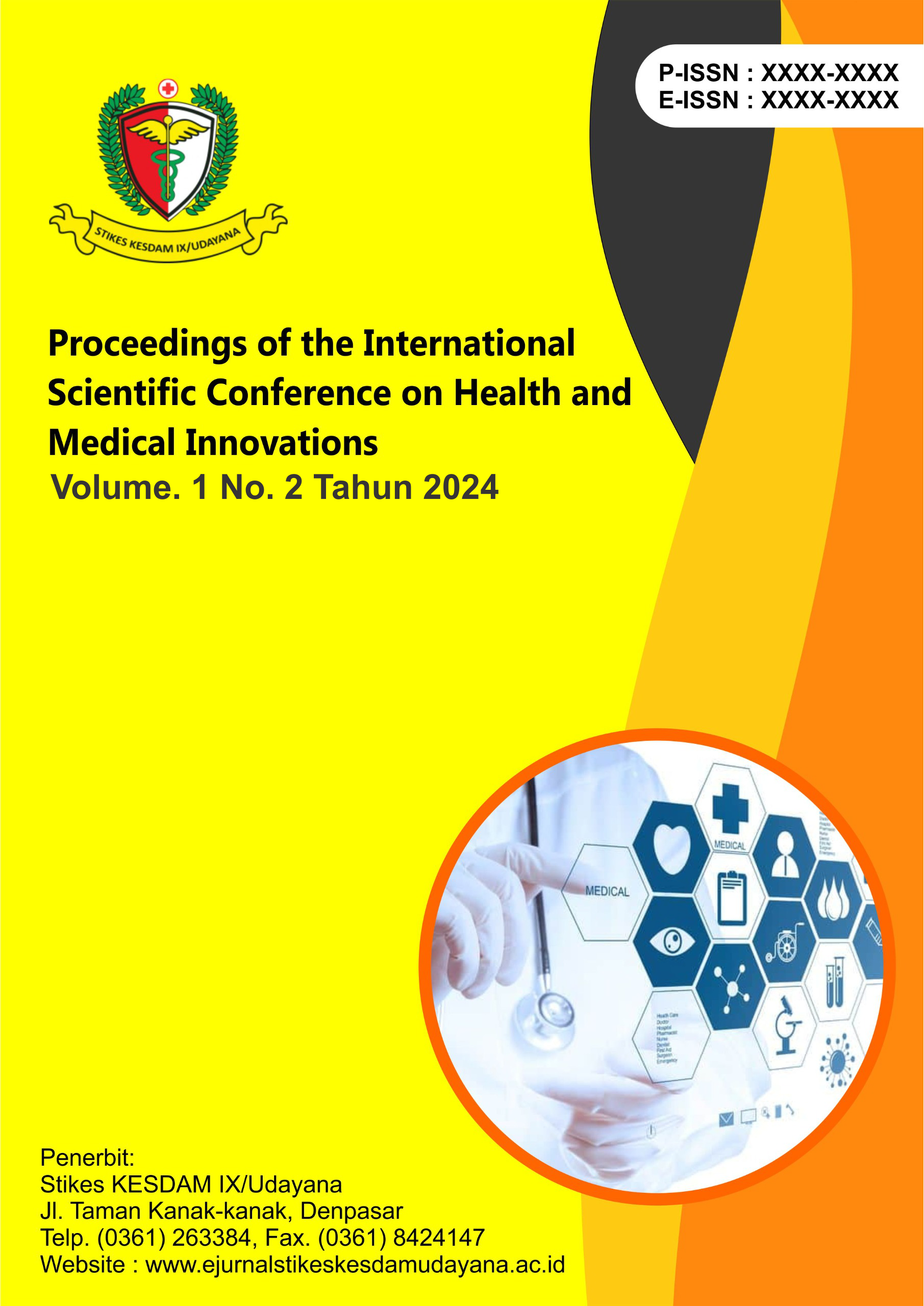The Level Of Knowledge Of Soldiers on the Force Denkav 4/SP Kodam IX/Udayana About Tinea Pedis
Keywords:
TNI Soldier, Knowledge Level, Tinea PedisAbstract
TNI soldiers carry out their duties in the field and at the posts of the knight, almost 24 hours they must always be on standby and carry out their duties in full uniform, feet will always be wrapped in socks and shoes for a long time because it will affect the health of their skin. The fungus will breed and will cause tinea pedis around the soles of the feet and also between the toes. The purpose of this study is to determine the characteristics of respondents based on age, education level, and rank, and to know the soldiers' knowledge level about Tinea Pedis in the Denkav 4 / SP Kodam IX / Udayana Unit. The design used in this scientific paper was descriptive univariate. This study used systematic random sampling, which was by taking samples that have even attendance numbers in attendance numbers. Samples taken in the study were 82 TNI soldiers in the Denkav 4 / SP Kodam IX / Udayana unit. The measuring instrument used 20 questionnaire statements made by researchers who have tested their validity and reliability. Most of the respondents were aged 26-35 years with a total of 47.6%, the highest level of education was Senior High School / equivalent amounting to 82.9%, and the most rank/class was non-commissioned officer with a total of 64.6%. Most of the respondents had a sufficient level of knowledge, amounting to 45 people or 61.6%. The result of this research is that most of the respondents have a good level of knowledge (57.3%). Because there are still respondents who have a low level of knowledge, it is hoped that the health section in the Denkav 4 / SP Kodam IX / Udayana unit will conduct health education every quarter to increase the knowledge of its members to prevent disease.
References
Agustine, R. (2012). Comparison of sensitivity and specificity of direct prepare inspection of KOH 20% with centrifugation and no centrifugation on tinea kruris, 35–38. http://repository.unand.ac.id/18063/
Amin, M. Al, & Juniati, D. (2017). Classification of human age group based on fractal dimensional analysis of box counting fractal image with Canny edge detection. Scientific Journal of Mathematics, 2(6), 1–10.
Budiman, & A, R. (2013). Kapita selecta quisionary knowledge and attitude in health research. Salemba Medica.
Djuanda, A. (2005). Skin and gender disease science (Volume 2). Faculty of Medicine UI.
Farihatun, A., Nurmalasari, A., Biathi, E., Sumirah, M., Setiawan, D., & Wahlanto, P. (2018). Meditation SAFE Ciamis SARI Ciamis Sarient 2017. Meditory, 6(7), 56–60.
Harahap, M. (2000). Skin disease science. Hypocrates.
Hurlock, E. (1996). Developmental psychology (& A. Language: dr. M. M. T. & D. M. Z. (Eds.)). Erlangga.
Lakshmipathy, D. Q., & Kannabiran, K. (2010). Review on dermatomycosis: Pathogenesis and treatment. Natural Science, 02(07), 726–731. https://doi.org/10.4236/ns.2010.27090
Legalities, A. A. (2018). Pathophysiology of tinea pedis. Alomedica. https://www.alomedika.com/penyakit/dermatovenerologi/tinea-pedis/patofisiologi
LeMone, P., Burke, K. M., & Bauldoff, G. (2017). Medical nursing teaching book (M. T. Iskanda, Ed.; 5th ed.). EGC.
Muliadi, D. (2015). Relationship of knowledge level to transmission of fishermen skin disease in North Sumatra Toba village. University of North Sumatra, 102, 7–37.
Napitupulu, A., Subchan, P., & Widodo, Y. (2016). Prevalence and risk factors of tinea pedis in Semarang City traffic police, 6–15.
Notoatmodjo, S. (2010). Health research methodology. Rineka Cipta.
Notoatmodjo, S. (2014). Health promotion theory and application. Rineka Bineka.
Nursalam. (2011). Concept and application of nursing science research methodology. Salemba Medica.
Pratiwi, T. T. (2018). An overview of the level of knowledge of the police investigator in the jurisdiction of the city of Cimahi about visum et repertum.
Priyatno, E. T. (2019). Knowledge about prevention of recurrence of tinea pedis (water lice) in members of the warrior at Satlak Denpom Divif 2 Kostrad Lawang Malang - Repository institution Poltekkes Hospital dr. Soepraoen Malang. http://repository.poltekkes-soepraoen.ac.id/387/
Rizky, & Muhammad. (2018). Dematocositosis Indervient Sikend and Dermatocomositosis in Puscesmation Sukoharjo Disu. Journal of Chemical Information and Modeling, 9, 1689–1699.
Sally, E. B., M, S., Khan, D., & J, T. (2012). Oral treatments for fungal infections of the skin of the foot. https://www.cochranelibrary.com/cdsr/doi/10.1002/14651858.CD003584.pub2/full#:~:text= We found terbinafine and itraconazole,tend to be most evaluated.
Shahydah, A. A. (2019). Tinea pedis: Pathophysiology, diagnosis, and managing. Alomedica. https://www.alomedika.com/penyakit/dermatovenerologi/tinea-pedis
Siregar, R. S. (2005). Skin disease saripathy (H. Hartanto, Ed.; 2nd ed.). EGC.
Sora, N. (2020). Understanding work and examples around us. http://www.pengertianku.net/2017/02/pengertian-pekerjaan-dan-examples.html
Surahman, Rachmat, M., & Supardi, S. (2016). Research methodology. Health HR Pusdik. http://library1.nida.ac.th/termpaper6/sd/2554/19755.pdf
TNI, P. (2020). Role of TNI functions and tasks. https://tni.mil.id/pages-2-peran-fungsi-da
TNI. (2010). Comparison of the Indonesia Nomor 39 Years 2010 administration of the Indonesian National Army (Tentara Nasional Indonesia). TNI.




